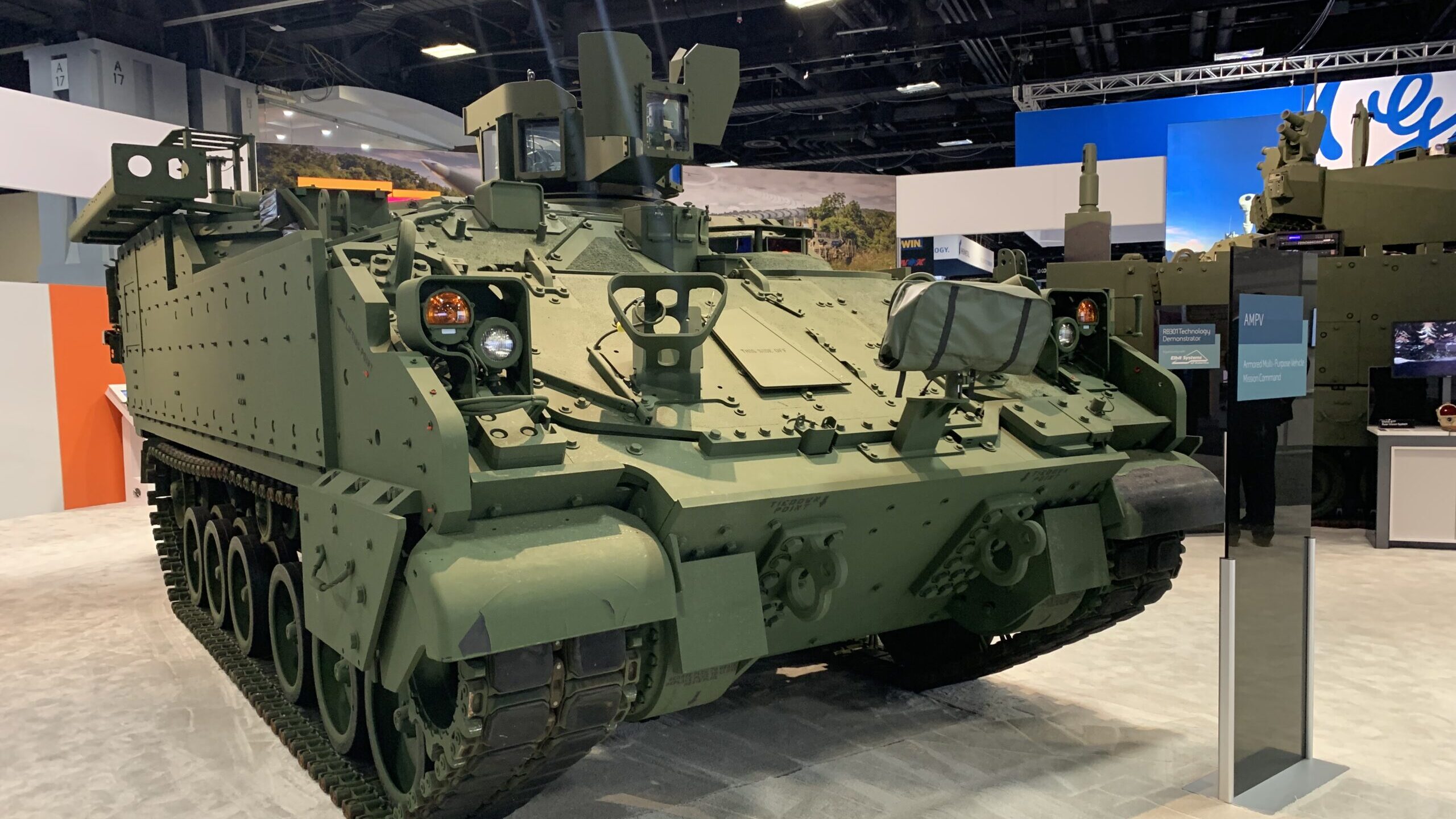
An AMPV is on display at the 2021 Association of the United States Army conference in Washington, DC. (Breaking Defense / Colin Clark)
AUSA: After some early stumbles as BAE Systems stood up a new manufacturing floor with aluminum welding robots and other advanced technologies, the company says it’s back on track producing the Armored Multi-Purpose Vehicle, the replacement for the Army’s venerable M113s.
BAE encountered difficulties with the new advanced welding machines and had to wait for some of the Defense Contract Management Agency inspectors, who oversee production for the government, to get training so they could examine the aluminum welds on the personnel carrier’s thick aluminum hull. The AMPV’s welds are very different from conventional welds, Bill Sheehy, who leads the AMPV effort for BAE, told reporters Tuesday.
AMPV isn’t designed to advance with the M1 Abrams and M2 Bradley in the first wave of an assault. Instead, it’s a second-line vehicle, well-armored but lightly armed, meant to replace a wide range of M113 variants responsible for a variety of jobs. The five AMPV models include an armored ambulance, a mobile surgery, a mobile command post, a mortar carrier for close-in fire support, and a general-purpose hauler of troops and supplies.
RELATED: AMPV: BAE Delivering All 5 Variants This Fall
The program, which was rebaselined during Low Rate Initial Production, is now meeting monthly production goals, according to Jim Schimer, deputy PEO for ground combat systems. But a “gap remains” between what BAE was contracted to supply and what they are supplying.

The first production Armored Multi-Purpose Vehicle, a mobile command and control variant Credit: BAE Systems Inc.
Shimer said a verbal agreement has been reached with the company over the new goals but neither he nor Sheehy provided numbers. “I think we’re on a good path,” the Army’s deputy PEO said.
Key to the new vehicle’s future was whether it could withstand modern threats to its armor, and it can, according to BAE and the Army. And whether it could move quickly enough to keep up with the Armored Brigade Combat Team. Again, both said it can.
RELATED: OMFV: Army gets BAE, GD Designs For Bradley Replacement
Also, though the AMPV looks quite a lot like a Bradley Fighting Vehicle, it’s a new design that has electric power. That’s crucial because it must be able to tap into the Army’s mobile network.
“It provides the Army the ability to deploy its network capability in a tracked vehicle at the brigade level for the first time,” Sheehy noted.
So far, BAE has turned out 60 AMPVs of all five types, including one of the Command and Control vehicles, which was finished last week and is on display here on the floor. (Follow Breaking Defense’s full AUSA 2021 coverage here.)
Training for the first unit equipped begins in January 2023.






















